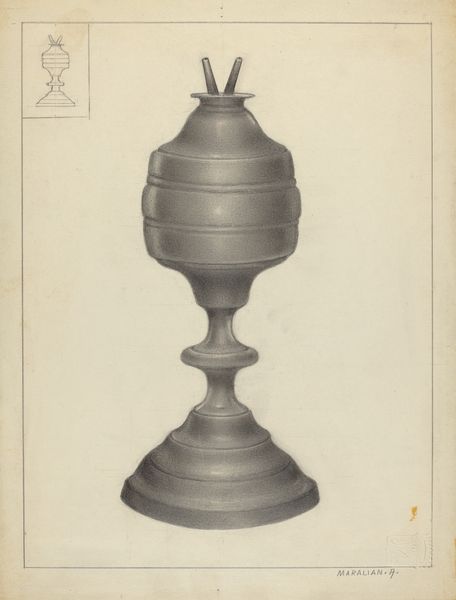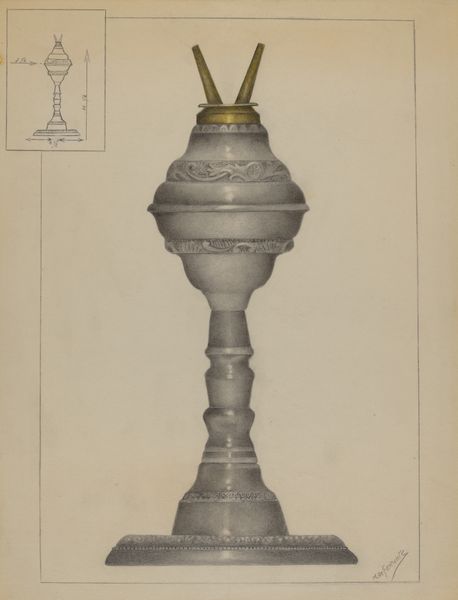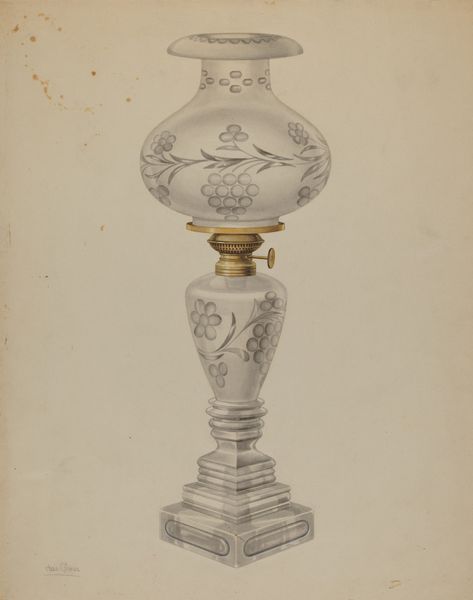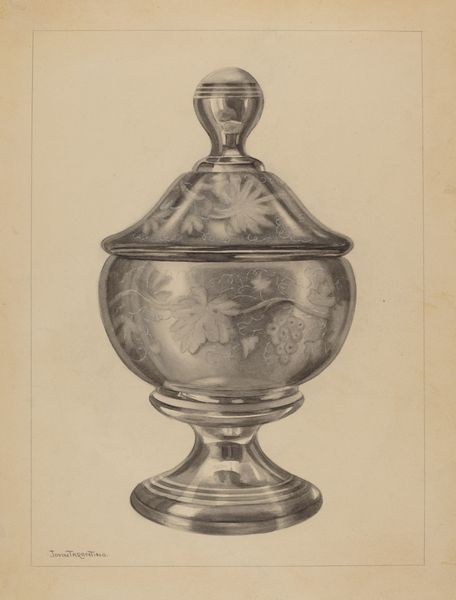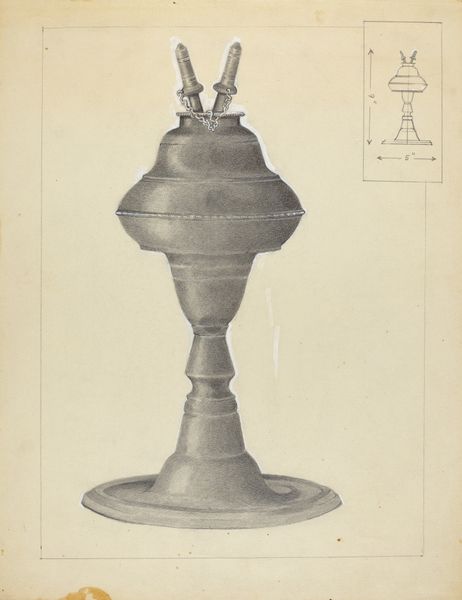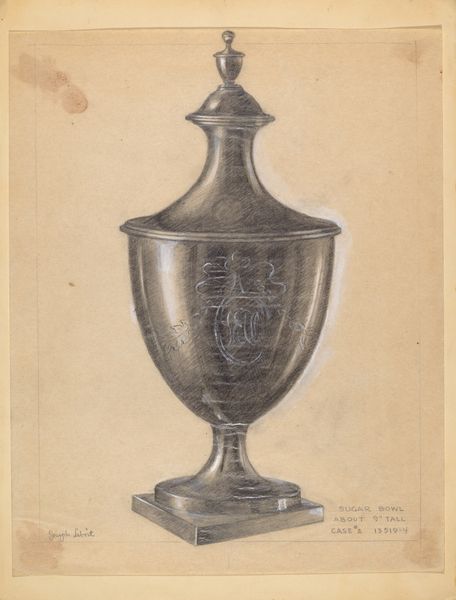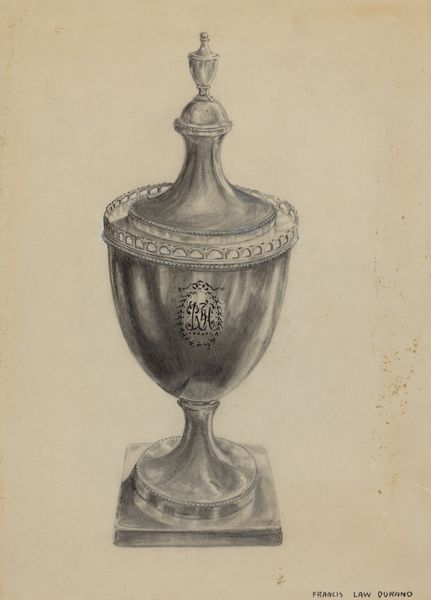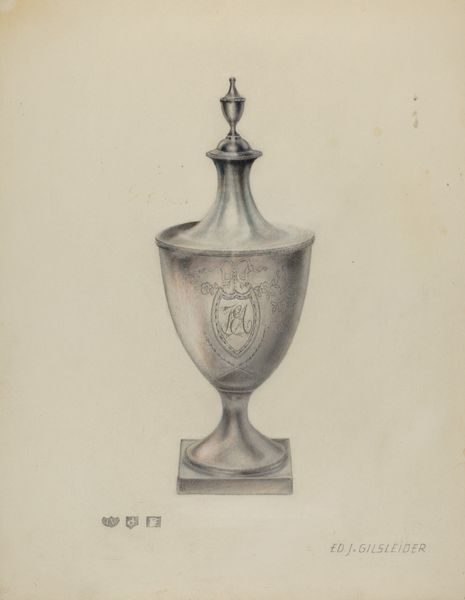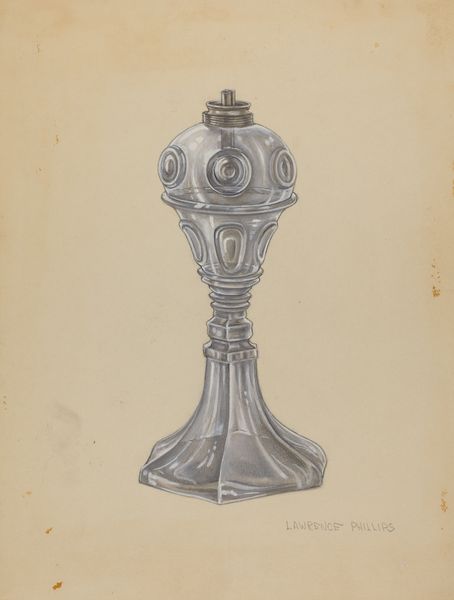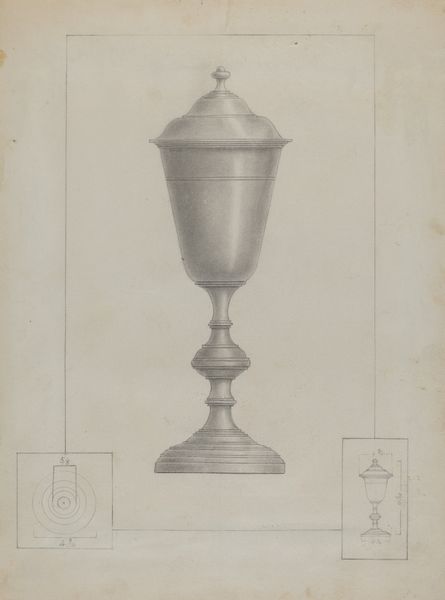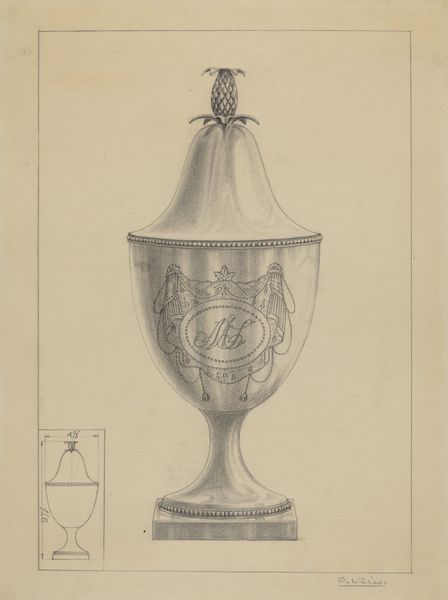
drawing, pencil
#
drawing
#
pencil drawing
#
pencil
#
academic-art
Dimensions: overall: 29.3 x 22.9 cm (11 9/16 x 9 in.)
Copyright: National Gallery of Art: CC0 1.0
Editor: We're looking at "Lamp," a pencil drawing by James O'Mara from around 1939. I'm immediately drawn to the intricate shading – it gives a real sense of the lamp's three-dimensionality and weight. What do you notice in this work, from your perspective? Curator: It's interesting to consider this as an object intended for mass production, mediated by the hand of the artist through drawing. The artist meticulously renders the form and texture of what would likely be an industrially produced item. Consider the relationship between the "high art" skill of drawing and the "lower art" status of industrial design and manufacturing. The pencil, the paper - how do they contribute to our understanding of labor here? Editor: That's a fascinating way to frame it. I hadn't thought about the contrast between the handmade drawing and the potentially mass-produced lamp. Do you think O'Mara's intention was to elevate the status of the object itself, or more about showcasing his skill as a draughtsman? Curator: The two aren't mutually exclusive. He's undeniably demonstrating skill, but consider what drawing a lamp *does*. It calls attention to the design, the form, and ultimately, the object's role in everyday life and consumption. Is this a luxury lamp, or something more utilitarian? How does the drawing affect its perceived value? What details would suggest that? Editor: The level of detail does lend it a certain elegance, even though it seems fairly simple in form. It’s almost as if the drawing *makes* it luxurious. Thinking about the means of production, I wonder if drawings like this were common for designs before manufacturing began, almost like blueprints but with an artistic flourish. Curator: Precisely. This drawing can be understood as an integral step in the production process. This image also complicates the very idea of authenticity and originality, isn’t it? Editor: Definitely something to think about – it blurs the line between art, design, and manufacturing in a really interesting way. Thanks! Curator: It highlights the value we assign to each stage of object creation, which shifts over time. My pleasure!
Comments
No comments
Be the first to comment and join the conversation on the ultimate creative platform.
